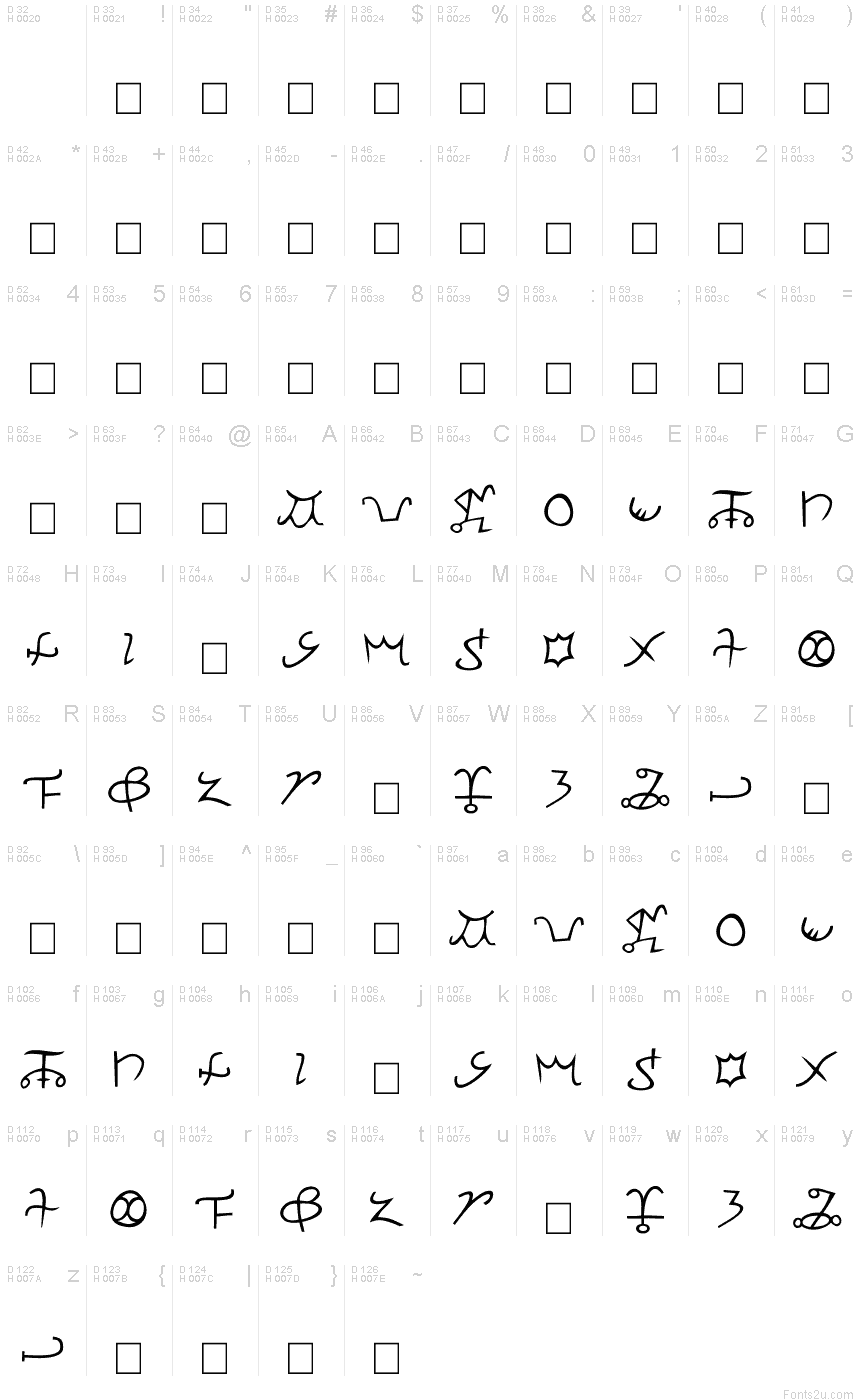Apollonian
TrueTypeFreeware
- Accenti (parziale)
- Euro
Apollonian.ttf
Tag
Mappa caratteri
Si prega di utilizzare il menu a tendina per visualizzare le mappe di caratteri diversi contenuti in questo tipo di font.

Informazioni di base caratteri
Dichiarazione di Copyright
© 2002 Daniel U. Thibault. All Rights Reserved.
Font famiglia
Apollonian
Font sottofamiglia
Regular
Sottofamiglia unico di identificazione
Urhixidur:Apollonian Regular:2002
Nome completo del font
Apollonian
Nome tabella versione
Version 1.00; 2002 August 28
Postscript nome del font
Apollonian
Fabbricante
Progettista
Daniel U. Thibault
Descrizione
Apollonian 2002 1.00
A late-medieval secret alphabet which has been recorded in a number of versions, usually with a Greek mapping (e.g. Blaise de Vignère's «Traité des chiffres», 1586). Though traditionally identified as the script of Apollonius of Tyana, there is no evidence to substantiate this claim.
Apollonius of Tyana was the most famous philosopher of the Greco-Roman world of the first century A.D. He devoted the major part of his long life to the purification of the many cults of the Roman Empire and to the instruction of the ministers and priests of its religions. A well-travelled contemporary of Jesus Christ, many "wonders" and "miracles" were consigned by his biographer, Flavius Philostratus (who wrote his Life of Apollonius circa 220 A.D.), fodder for the long-running theological debate on the nature of miracles.
The glyphs are taken from the «Dictionary of Occult, Hermetic and Alchemical Sigils»
by Fred Gettings (1981). This font supplies a Greek mapping in addition to a Latin one (with Chi mapped to C, Eta to H, Theta to Q, Upsilon to U, Omega to W, Psi to Y). There is no J nor V.
A late-medieval secret alphabet which has been recorded in a number of versions, usually with a Greek mapping (e.g. Blaise de Vignère's «Traité des chiffres», 1586). Though traditionally identified as the script of Apollonius of Tyana, there is no evidence to substantiate this claim.
Apollonius of Tyana was the most famous philosopher of the Greco-Roman world of the first century A.D. He devoted the major part of his long life to the purification of the many cults of the Roman Empire and to the instruction of the ministers and priests of its religions. A well-travelled contemporary of Jesus Christ, many "wonders" and "miracles" were consigned by his biographer, Flavius Philostratus (who wrote his Life of Apollonius circa 220 A.D.), fodder for the long-running theological debate on the nature of miracles.
The glyphs are taken from the «Dictionary of Occult, Hermetic and Alchemical Sigils»
by Fred Gettings (1981). This font supplies a Greek mapping in addition to a Latin one (with Chi mapped to C, Eta to H, Theta to Q, Upsilon to U, Omega to W, Psi to Y). There is no J nor V.
Informazioni estese caratteri
Piattaforme supportate
PiattaformaCodifica
UnicodeUnicode 1.0 semantica
MacintoshRomano
MicrosoftUnicode BMP solo
Dettagli carattere
Creato2002-08-28
Revisione1
Contatore glifi273
Unità per em2048
Incorporare i dirittiIncorporamento per l'editing consentito
Classe famigliaNessuna classificazione
PesoMedio leggero
AltezzaNormale
Mac styleGrassetto
DirezioneSolo fortemente sinistra a destra glifi + contiene neutrali
Disegno naturaRegolari
InclinazioneVario